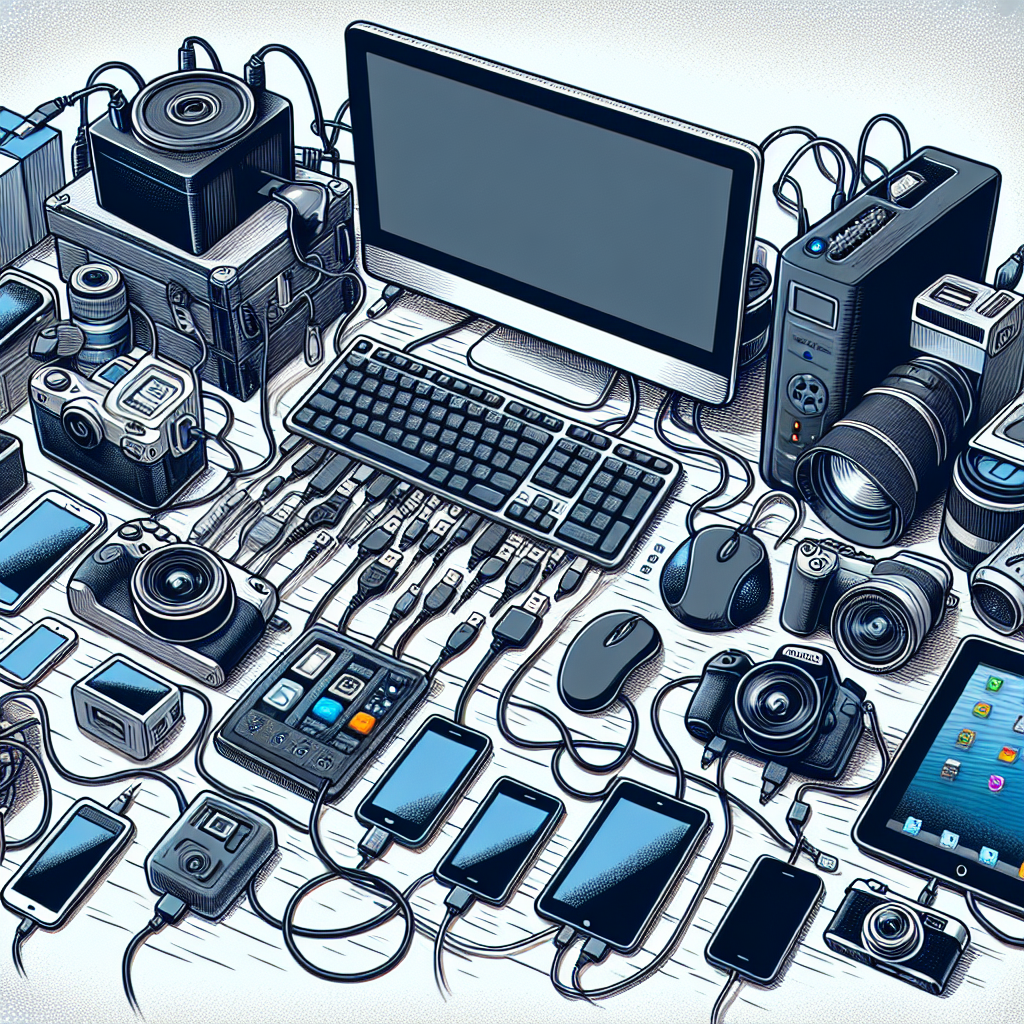
Why Do Some USB Devices Not Work When Plugged into a USB Hub?
USB hubs have revolutionized the way we connect multiple devices to our computers, allowing for a more organized and efficient workspace. However, it’s not uncommon for users to encounter issues where some USB devices fail to function when plugged into a USB hub. This article delves into the various reasons behind this problem, offering insights and troubleshooting tips to help you identify and solve these issues.
| Reason | Description |
|---|---|
| Power Limitations | USB hubs may not provide enough power to energize all connected devices, especially high-power ones. |
| Device Compatibility | Some devices might not be fully compatible with USB hubs, leading to connectivity issues. |
| USB Version Conflicts | Different versions of USB (e.g., USB 2.0 vs USB 3.0) can cause compatibility problems. |
| Faulty Hub | A damaged or malfunctioning hub can prevent devices from working correctly. |
| Cable Issues | Worn or damaged cables can lead to failure in communication between devices and the hub. |
| Insufficient Bandwidth | High bandwidth usage from connected devices can lead to some devices not working properly. |
Understanding USB Hubs
A USB hub is a device that expands a single USB port into several, allowing multiple USB devices to connect to one computer. There are two main types of USB hubs: powered and unpowered. Powered hubs come with an external power supply and can deliver more power to connected devices, making them ideal for high-power devices like external hard drives and printers. Unpowered hubs rely on the computer’s USB port for power, which can limit the number of devices connected or the type of devices that function properly.
Key Reasons for USB Device Malfunctionality
1. Power Limitations
One of the most common reasons some USB devices do not work when plugged into a USB hub is due to power limitations. Unpowered hubs draw power from the host computer’s USB port, which may not be sufficient to support multiple high-power devices simultaneously. Each USB port supplies a limited amount of current:
- USB 2.0: Up to 500mA
- USB 3.0: Up to 900mA
When too many devices are connected to an unpowered hub, the available current may be distributed unevenly, leading to some devices receiving insufficient power to function.
2. Device Compatibility
Not all USB devices are compatible with all hubs. Some devices, particularly older peripherals or specialized equipment, may require specific connection types or configurations to work properly. For example, USB keyboards and mice are generally plug-and-play, while devices like scanners, printers, or external drives might require additional drivers or a direct connection to the computer for optimal performance.
3. USB Version Conflicts
USB standards have evolved over the years, with USB 3.0 offering significant improvements over USB 2.0 in terms of data transfer speed. However, some devices may only work correctly if they’re plugged into a hub that matches their USB version. Additionally, connecting a USB 3.0 device to a USB 2.0 hub can result in reduced performance or failure to operate due to compatibility issues.
4. Faulty Hub
Like any electronic device, USB hubs can suffer from malfunction or damage. A faulty hub may exhibit symptoms such as only some ports working, fluctuating power supply, or failure to recognize connected devices. It’s advisable to test the hub with different computers or USB devices to determine if the hub itself is the source of the problem.
5. Cable Issues
The quality of USB cables also plays a crucial role in device functionality. Damaged or low-quality cables can impede data transfer and power delivery, resulting in devices that either don’t work or behave erratically when connected to a hub. Whenever possible, use high-quality and correctly rated cables to ensure optimal performance.
6. Insufficient Bandwidth
USB hubs share the bandwidth of the single port on the computer across all connected devices. If you connect multiple high-bandwidth devices, such as a webcam and external hard drive, to the same hub, the combined usage might exceed the available bandwidth. This can lead to performance degradation or cause one or more devices to stop functioning entirely.
Troubleshooting USB Hub Issues
If you find that some USB devices are not working when connected to a USB hub, follow these troubleshooting steps:
1. Check Power Supply
If you’re using an unpowered hub, try disconnecting some devices and connecting fewer high-power ones. If you’re using a powered hub, ensure that it is connected to a power source and is functioning correctly.
2. Test with Different Devices
Try connecting different devices to the hub to see if they work. This can help determine whether the issue is with the hub itself or the devices that are not functioning.
3. Inspect USB Cables
Check for any visible damage to the USB cables. If you find any fraying or wear, replace the cable and test the device again.
4. Update Drivers
Ensure that your operating system and any necessary drivers for your USB devices are up to date. Outdated drivers can cause compatibility issues.
5. Test the Hub
If possible, test the hub with another computer to see if the issues persist. If it works fine on another system, the problem might lie with your computer.
Conclusion
USB hubs serve as a handy solution for connecting multiple devices to a single USB port, but they are not without their limitations. Understanding the reasons why certain USB devices may not work when plugged into a USB hub can help users troubleshoot and resolve issues effectively. By being aware of power limitations, device compatibility, USB version conflicts, and other potential factors, users can make informed decisions and maintain a smooth user experience.


